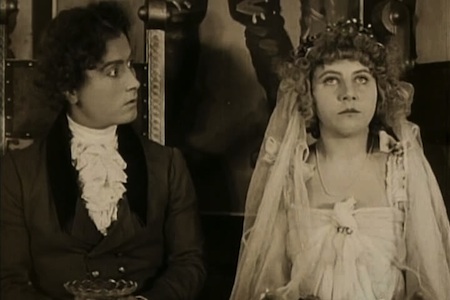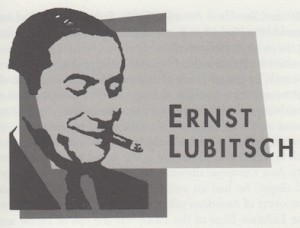Born: January 28, 1892, Berlin, Germany
Died: November 30, 1947, Hollywood, CA
Lubitsch invented the modern Hollywood.
—Jean Renoir
Behind the greatest productions of the German cinema of the 1920s was Ernst Lubitsch. Lubitsch had not only directed some of the decade’s most artistic and influential costume spectacles, including Passion (1919) and Deception (1920), but he had demonstrated a keen sense of dialogue that imparted a very warm and human quality to otherwise stiff plots. His films were instrumental in securing a commercial film market for Germany before the country’s famed expressionist era started. Already present in Lubitsch films was a mastery of the close-up, and this made him attractive to a young producer named Adolph Zukor, who had one of the world’s most famous faces under contract, international star Mary Pickford.
Adolph Zukor brought Lubitsch to Hollywood to make “Little Mary” vehicles. The first assignment was the troubled production of Rosita (1923). A temperamental Pickford insisted on giving Lubitsch her constant advice, and their relationship immediately turned adversarial. Pickford and Lubitsch would never work together again, and she would call the film the worst in her career. Unimpressed by his foreign import, Adolph Zukor sent Lubitsch off to make a series of films for which there were no great expectations. Freed of the domineering Pickford, however, the young director would surprise everyone with The Marriage Circle (1924), The Love Parade (1929), Monte Carlo (1930) and Trouble in Paradise (1932). Lubitsch’s eventual successes in America would later lead other European émigrés, notably film noir director Fritz Lang, to come to Hollywood.
Soon, Lubitsch established a filmic style that came to be known as the “Lubitsch touch,” a graceful mix of refined dialogue, understated wit, and polished camera work arrived at through careful planning and rehearsal. Lubitsch’s urbane style marked him as a cosmopolitan director who could handle drama, comedy and musicals with equal panache. He enjoyed an impressive string of hits as he made the transition from silent films to talkies, owing much to scripts that poked fun at the sexual mores and affectations of high society. As a European director introduced suddenly into a pretentious Hollywood clique, he had an outsider’s vantage point that resulted in an insightful mocking of American values during the Roaring Twenties. A trademark of the Lubitsch films of the 1930s was the use of subtle sexual innuendo, coyly disguised in clever banter to elude the censors who enforced Hollywood’s Production Code.
Lubitsch also gained regard for his significant innovations in the use of sound. He preferred the feeling of an intimate scene, but the noise of the film winding through the camera interfered with the hushed words of cuddled lovers. To get the extreme close-ups he desired without set noise, Lubitsch simply filmed without recording any sound, then dubbed entire scenes in postproduction. This allowed for greater dynamic camera movement and also gave Lubitsch an opportunity to shout directions to the actors while filming. When shooting was complete, his actors would record their lines by quietly whispering into a microphone in a soundproof booth while watching themselves projected on a nearby screen. This technique was used extensively by Orson Welles, Alfred Hitchcock and Otto Preminger, and the practice is still widespread in studios today. The Lubitsch musical also created sound innovations. Though most of the song-and-dance films of 1930s were primarily revues, Lubitsch found ways to incorporate musical numbers into a tightly woven plot, allowing his characters to sing only during appropriate places in the storyline. The songs were carefully selected to echo the themes of the film. This integration made the Lubitsch musicals far superior and revolutionized the structure of the entire genre, making the chorus-line spectacles of Busby Berkeley virtually obsolete. Nearly all musicals filmed in the last forty years owe a debt to this underlying influence.
By 1935, Lubitsch had been elevated to head of production at Paramount, but his continued stints at directing overshadowed his managerial skills, and he resigned his duties after only one year to focus on comedies. With a final output of The Merry Widow (1934), Ninotchka (1939), To Be or Not to Be (1942) and Heaven Can Wait (1943), Lubitsch put an unmistakable signature on light comedies that has remained the standard ever since.
The career of Ernst Lubitsch was blessed with both consistent commercial success and a solid standard of artistry – a rare blend in Hollywood. In his lifetime, he was respected by every director, most of whom styled their work on his. Among the other great directors on the list, Lubitsch trails in ranking because he did not affect a single genre in the same way as John Ford, Fritz Lang, Alfred Hitchcock or Buster Keaton did. Lubitsch floated from genre to genre with ease, carrying with him an instinct for economical storytelling and wry humor. However, no other romantic comedies have been imitated more than Lubitsch’s, and no other films ever approached his in elegance.
To read all the republished articles from ‘The Film 100,’ as well as a complete listing of the 100 most influential people in the history of the movies, go to Reintroducing the Film 100 here on Keyframe.





